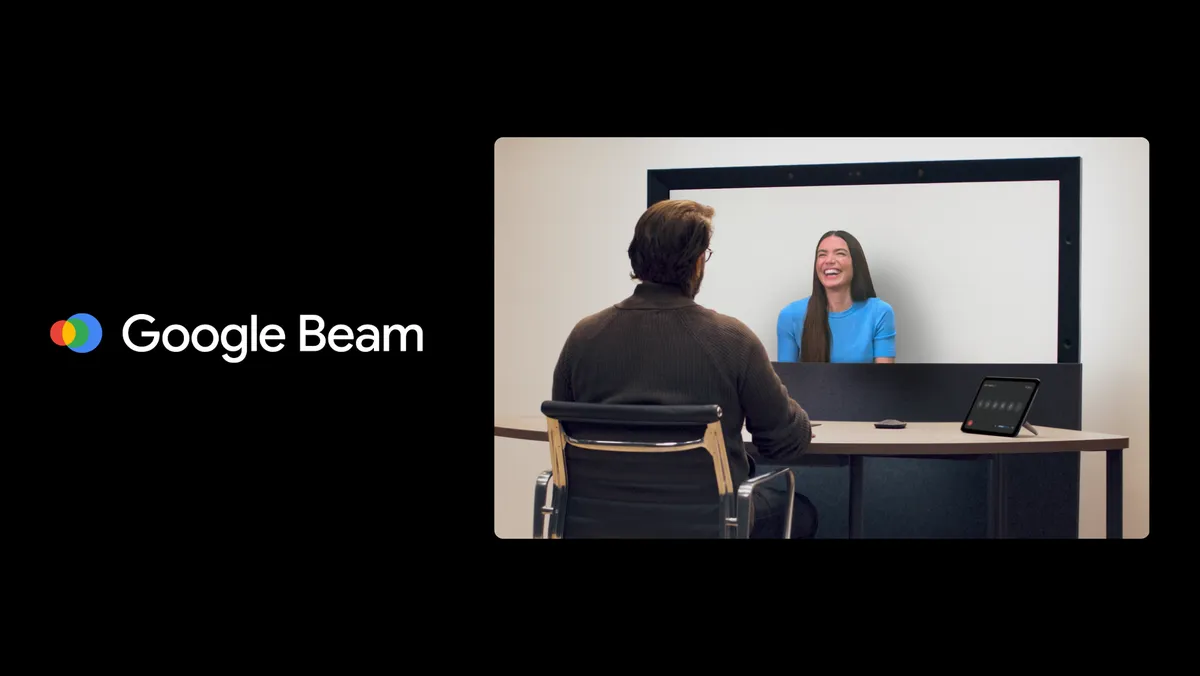Google Unveils Google Beam for Revolutionary Video Communication
During the Tech Acquaintance session with my students yesterday, I told them to imagine making a video conversation with someone on the other side of the world and feeling like they're right there with them. They were all excited and were already mentioning who they would be calling. With that, I introduced them to "Google Beam". This is the new 3D video communication platform created by Google. Using cool AI technology, it makes remote interactions feel super real, almost like being in the same room. Google Beam could change the game for how we communicate, making it easier to stay connected no matter where we are.

At its annual I/O developer conference on May 20, 2025, Google announced a transformative evolution in video communication technology, rebranding its ambitious Project Starline as Google Beam. This new AI-first 3D video communication platform promises to redefine remote interactions by creating immersive, lifelike experiences that make users feel as though they are in the same room, even when separated by thousands of miles. With partnerships from industry giants like HP and Zoom, and innovative features such as real-time speech translation, Google Beam is poised to revolutionize how businesses and individuals connect in an increasingly hybrid world.
This development is part of a trend in AI and communication technology, where immersive experiences are becoming more accessible, potentially revolutionizing fields like remote work, education, and healthcare, as supported by research into the benefits of 3D video for memory recall and engagement.
Google Beam utilizes light field display technology, allowing users to make eye contact and read subtle cues as if they were in the same room. This is achieved through an AI volumetric video model that converts standard 2D video streams into realistic 3D experiences, enhancing the depth and dimensionality of remote conversations. The platform is built on the robust infrastructure of Google Cloud, ensuring enterprise-grade reliability and compatibility with existing workflows.
The introduction of Google Beam comes at a time when the demand for effective virtual collaboration tools is at an all-time high. As remote work and digital communication continue to dominate professional and personal interactions, Google Beam's ability to foster meaningful connections is poised to make a significant impact. The technology is particularly relevant in fields such as education and healthcare, where immersive experiences can enhance learning and patient care.
Research into the benefits of 3D video communication supports the potential of Google Beam. Studies have shown that such technologies can boost memory recall, improve visual attentiveness, and enhance body language interpretation, making remote interactions more engaging and effective. This is especially crucial in medical education, where 3D video has been found to support curriculum activities and improve academic achievement, despite some ongoing debates about its overall impact.
After years of rigorous testing in Google’s offices and with select enterprise partners, the technology has matured into a commercially viable platform now known as Google Beam.
As Google Beam prepares to enter the market, it carries the promise of transforming how we connect in a digital age. The combination of cutting-edge AI, 3D imaging, and light field technology by Google has created a platform that not only enhances productivity but also restores the human element to remote interactions. With the first devices set to launch later in 2025 and demonstrations planned at InfoComm, the tech world is watching closely to see how Google Beam will shape the future of communication.
Google says they are excited about the progress made with Google Beam and the technology’s potential to solve the important problem of wanting to be together with someone even when you physically can’t. As the platform moves from research to reality, it stands as a proof to Google’s vision of using AI to foster authentic human connections, no matter where people are in the world.
How fast will you embrace this innovation?
Posted Using INLEO